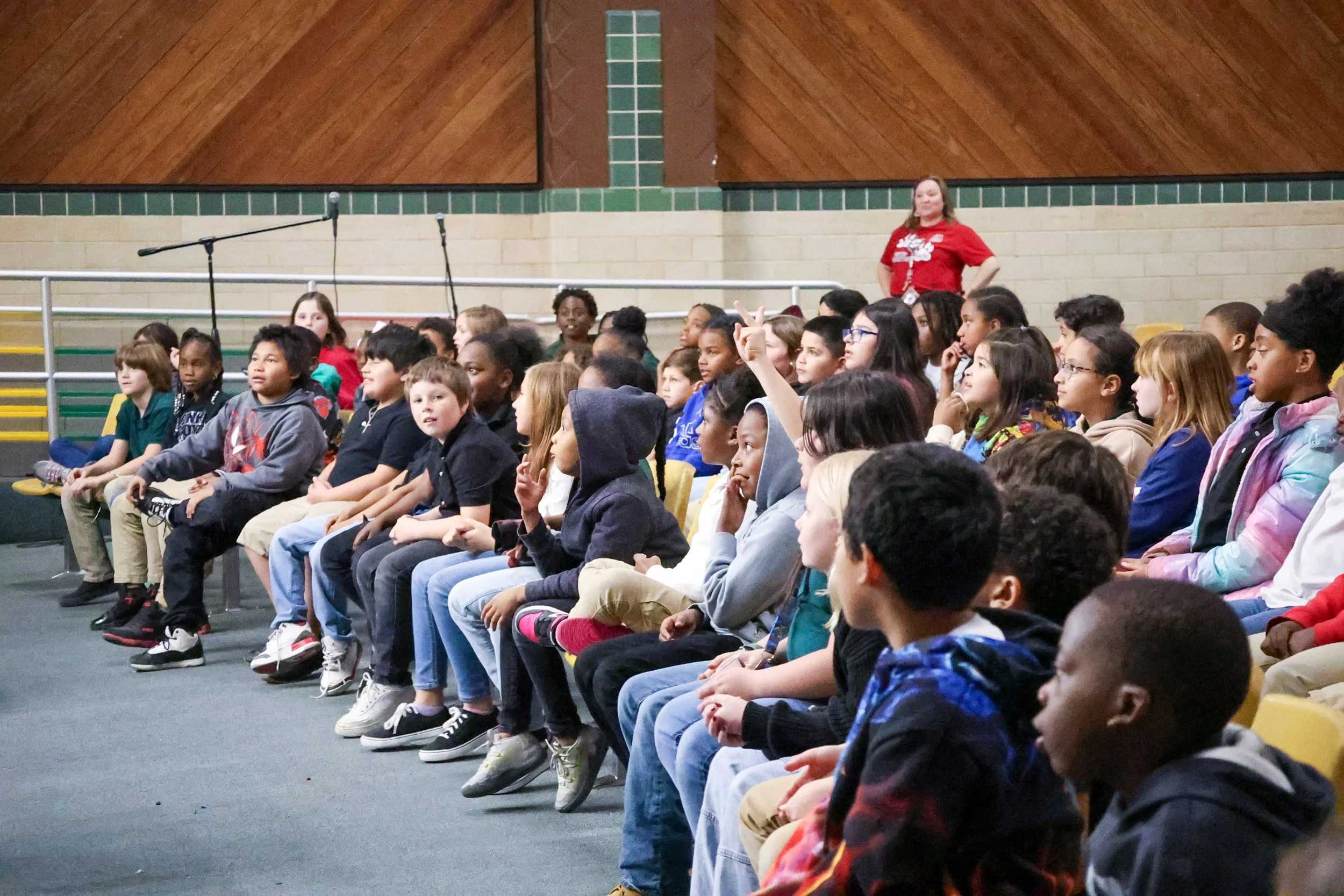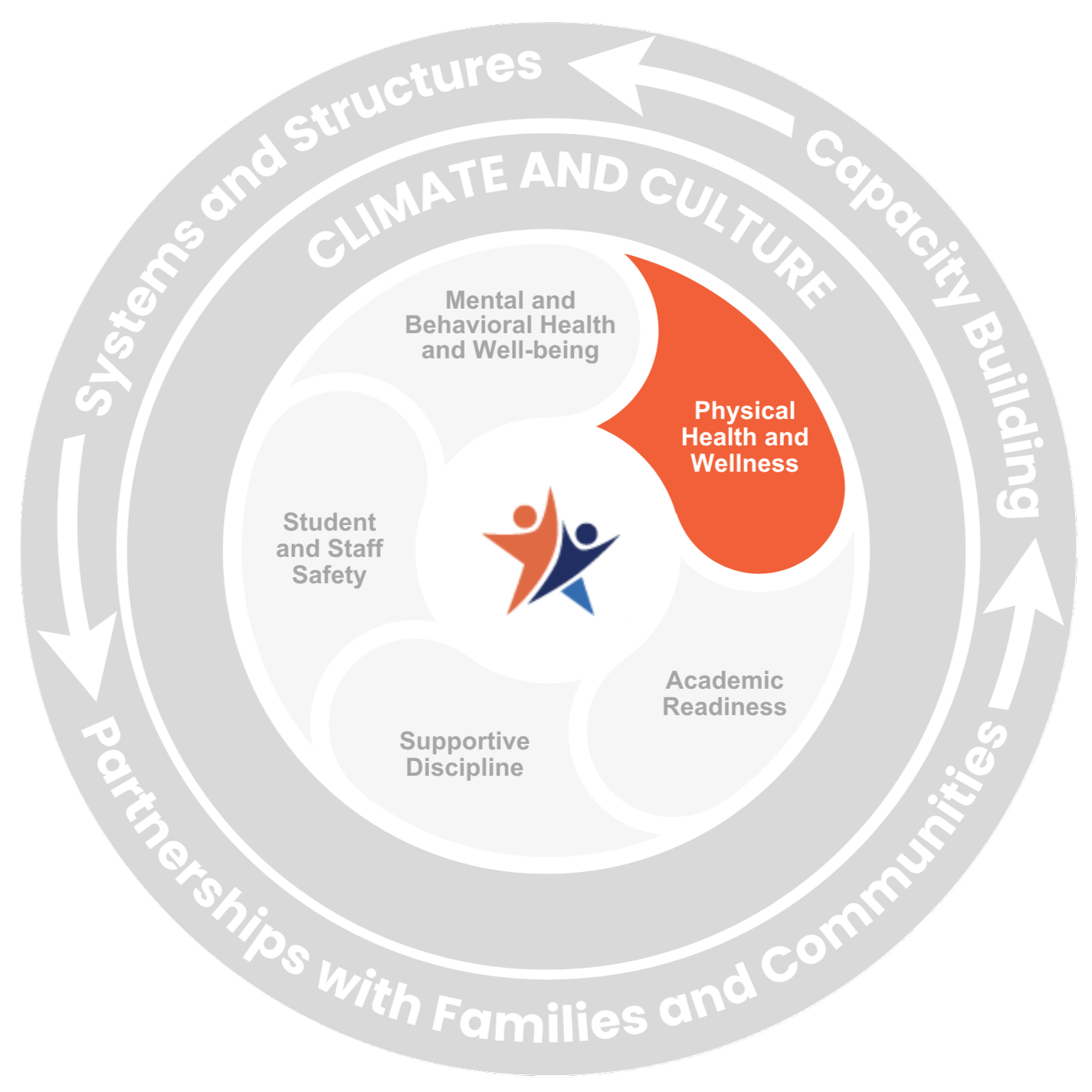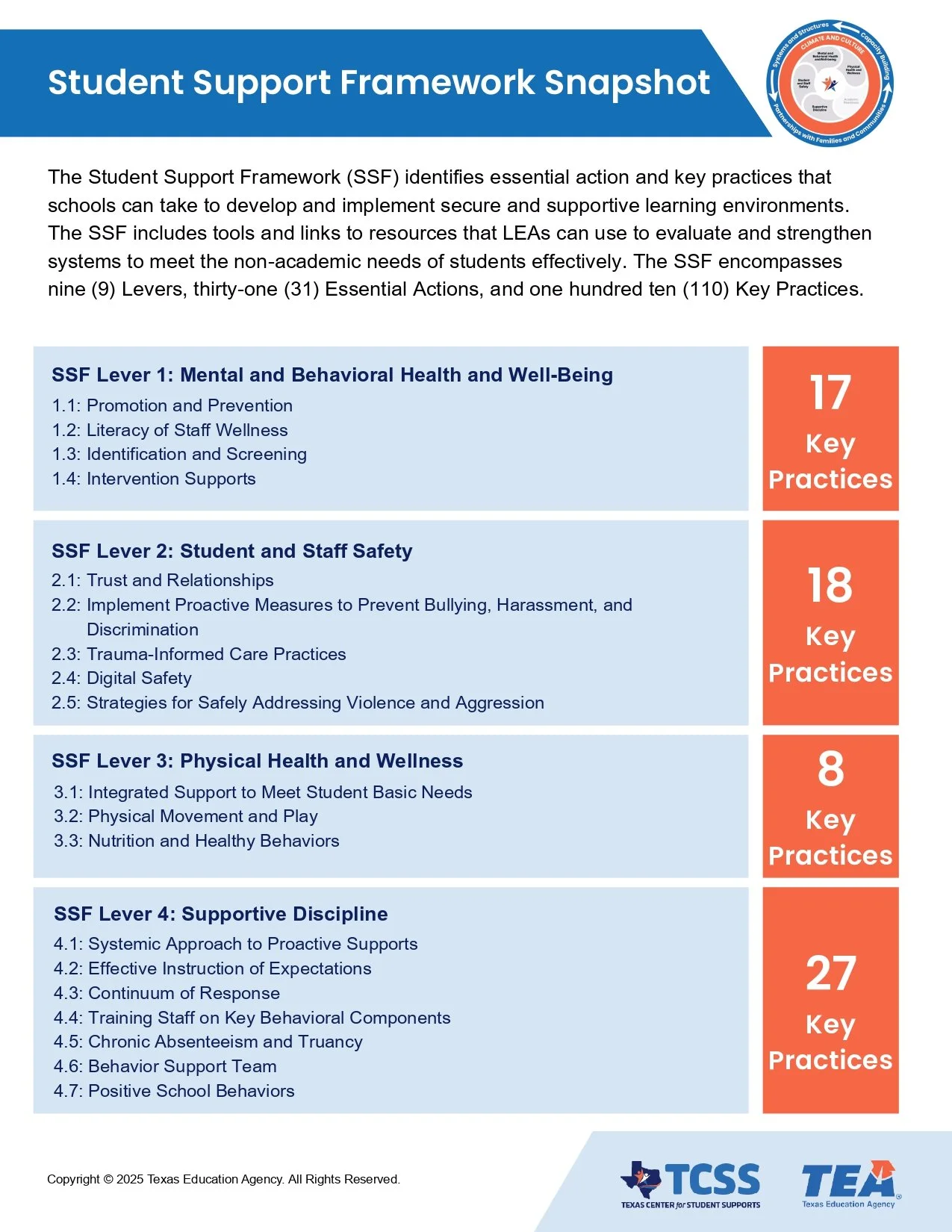
Student Support Framework
About
Student Support Framework
The Student Support Framework is designed to comprehensively address the multifaceted needs of students, encompassing mental and behavioral health and wellbeing, physical health and wellness, student and staff safety, and supportive discipline. The structured framework promotes establishing and implementing secure and supportive learning environments and practices, supporting LEAs in evaluating and strengthening systems to meet non-academic needs effectively. By prioritizing the comprehensive development of students, the framework equips students to succeed academically and to thrive in all aspects of life.
The SSF prioritizes students’ well-being and growth. At its core lie the five foundational components. These are the components that must be in place and be effective for a student to be healthy and well and to thrive. Surrounding the foundational elements are Climate and Culture. The foundational components can only be effective with a strong campus and district climate and culture. This includes positive relationships, a belief in the unique potential of every student, and the establishment of campus-wide expectations that provide continuity for students and classrooms.
The three foundational supports are interwoven throughout the climate and culture and the foundational components. These include:
Systems and Structures
Building Capacity
Partnerships with Families and Communities
The Structure of the
Student Support Framework
-
The lever is the largest category that high-performing campuses focus on. The SSF is made up of nine levers. The components of each lever are the actionable elements to improve student outcomes.
-
Within each lever, you will find Essential Actions. The Essential Actions describe what the most effective schools do to support non-academic needs of students.
-
Each Essential Action includes a set of Key Practices that define what the essential action entails when implemented with fidelity. Campus leaders can utilize Key Practices to define action steps taken to achieve Essential Action Practices.
-
The Success Criteria further defines the Key Practice as “look fors” or evidence. If the Key Practice is being implemented with fidelity, the success criteria can be collected or observed as evidence of success.
-
Under each lever, you will find the District Commitments. The District Commitments describe what district leaders do to ensure that schools are set up for success. They serve as foundational structures and systems upon which school-based best practices can be built.
-
The SSF includes a diagnostic assessment that allows campus teams to evaluates the health of student support systems using a four-point scale. Teams should work toward consensus by applying objective judgment, guided by evidence and data, when determining ratings.
Levers
-

SSF Lever 1: Mental and Behavioral Health and Well-being
-

SSF Lever 2: Student and Staff Safety
-

SSF Lever 3: Physical Health and Wellness
-

SSF Lever 4: Supportive Discipline
-

SSF Lever 5: Academic Readiness
-

SSF Lever 6: Systems and Structures
-

SSF Lever 7: Capacity Building
-

SSF Lever 8: Partnerships with Families and Communities
-

SSF Lever 9: Climate and Culture
Student Support Framework Tool Kit
-

Student Support Framework Tool Kit
-

Student Support Framework Essential Action Overview
-

Student Support Framework Snapshot 2025


